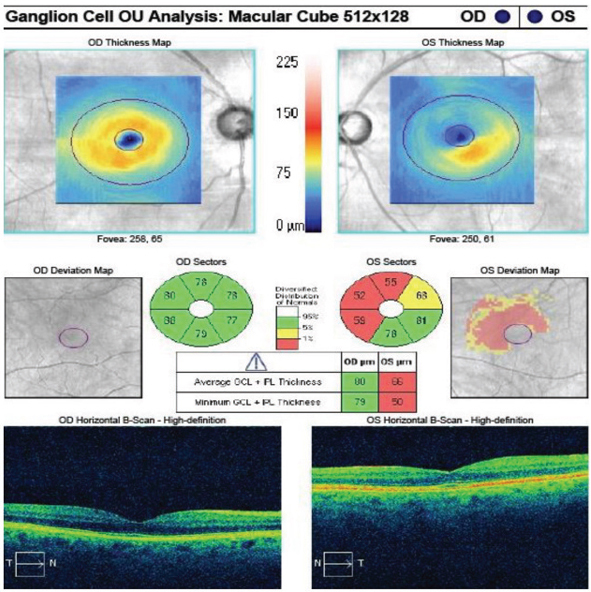 |
| Assessing IOP variability provides useful information for identifying those patients with glaucoma who are at higher risk of macular structural progression and subsequent central VF loss. Photo: Brian Fisher, OD. |
Peak IOP remains a well-established risk factor for glaucoma progression, and even modest reductions in peak IOP can have meaningful effects on disease management and visual outcomes, particularly in high-risk patients. Recently, researchers considered the effect of IOP variability and peak IOP within the broader context of glaucoma management. Their study, which was published in American Journal of Ophthalmology, assessed the association between long-term IOP variability and ganglion cell complex (GCC) layer thinning, an objective measure of macular structural damage in patients with glaucoma. The team found that higher IOP variability was independently associated with a faster rate of GCC thinning in glaucoma patients regardless of severity at baseline.
The study included 369 eyes of 249 glaucoma patients (282 early glaucoma and 87 moderate to advanced glaucoma) with at least four visits and two years of follow-up of OCT tests. The mean age of patients was 68.2 years, with over 5.1 years of follow-up.
The mean rate of GCC change was -0.59μm per year. In multivariable models, faster annual rate of GCC thinning was associated with a higher IOP fluctuation (-0.17μm per 1mm Hg higher or higher IOP range (-0.07μm per 1mm Hg higher) after adjustment for mean IOP and other confounding factors. Faster GCC thinning was observed when both mean IOP and IOP variability were higher.
“This cohort study found that there is a significant association between high IOP variability and the rate of GCC thinning in patients with early glaucoma and moderate to advanced stage of glaucoma,” the researchers wrote in their paper. “IOP fluctuation and IOP range had a stronger independent association with GCC thinning than mean IOP.”
“In addition to monitoring IOP magnitude and reducing IOP, clinicians should consider long-term IOP variability in the risk assessment of glaucoma patients,” they suggested. “Assessing IOP variability provides useful information for identifying those patients with glaucoma who are at higher risk of macular structural progression and subsequent central VF loss.”
Mahmoudinezhad G, Moghimi S, Nishida T, et al. Association of long-term intraocular pressure variability and rate of ganglion complex thinning in patients with glaucoma. Am J Ophthlamol. April 3, 2024. [Epub ahead of print]. |


